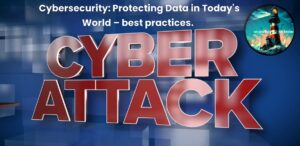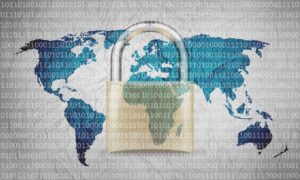
anything useful, in the easiest way

anything useful, in the easiest way
Cybersecurity: Protecting Data in Today's World | best practices.

In today’s digital age, cybersecurity has become a critical concern for individuals, businesses, and governments alike. The rise of the internet has brought with it a range of new challenges and risks, from malware and ransomware to phishing scams and cyber attacks. With so much sensitive information being stored and transmitted online, it is more important than ever to implement robust cybersecurity measures to protect our data and privacy.

CYBERSECURITY
So, what is cybersecurity? Simply put, cybersecurity is the practice of protecting computer systems, networks, and data from theft, damage, or unauthorized access. This includes everything from protecting personal information to safeguarding critical infrastructure and government secrets. Cybersecurity covers a wide range of areas, including network security, application security, information security, and more.
THREATS
One of the biggest threats facing individuals and businesses today is malware. Malware is a type of software that is designed to harm or damage computer systems, networks, or data. This can take many forms, including viruses, Trojans, worms, and more. Ransomware is another growing concern, as it allows cybercriminals to hold a victim’s data hostage until a ransom is paid.
Phishing scams are another common threat in the cybersecurity world. These scams typically involve an attacker posing as a trustworthy entity (such as a bank or government agency) in an attempt to trick individuals into revealing sensitive information, such as passwords or credit card numbers.

BEST PRACTISES | 13 TIPS
So, how can we protect ourselves from these and other cybersecurity threats? Here are 13 tips for implementing cybersecurity measures and safeguarding your data:
- Use strong passwords and two-factor authentication (2FA). A strong password is your first line of defense against cyber criminals, so be sure to choose a complex password that is difficult to guess or crack. Additionally, 2FA adds an extra layer of security by requiring a second form of verification (such as a code sent to your phone) in addition to your password.
- Regularly back up your data. In the event of a ransomware attack or other data loss, having a recent backup can help you quickly recover your files without having to pay a ransom.
- Keep your software and operating system up-to-date. Software updates often include security patches and bug fixes, so be sure to install them as soon as they are available.
- Be cautious of emails and links from unknown sources. Phishing scams often come in the form of an email or link, so be wary of anything that looks suspicious.
- Invest in a quality antivirus and anti-malware software. This can help prevent malware infections and detect them early if they do occur.
- Educate yourself and your employees on cybersecurity best practices. Regular training and awareness programs can help you stay up-to-date on the latest threats and how to protect against them.
- Use a virtual private network (VPN) when accessing sensitive information over public Wi-Fi. VPNs encrypt your data, making it much harder for attackers to intercept or steal your information.
- Enable firewalls on all your devices, including computers, smartphones, and routers. Firewalls act as a barrier between your device and the internet, helping to prevent unauthorized access.
- Use encryption to protect sensitive data, both when it is stored and when it is transmitted over the internet. Encryption can make it much more difficult for attackers to access or steal your information.
- Regularly monitor your financial statements and online accounts for unusual activity. This can help you detect fraud or unauthorized access quickly, allowing you to take action before any significant damage is done.
- Work with a trusted cybersecurity expert to assess your systems and implement additional security measures, such as penetration testing and security audits.
- Finally, develop a comprehensive incident response plan that outlines what steps to take in the event of a cyber attack or data breach. This can help you minimize the damage and recover more quickly.
- Report any suspected illegal activities to the relevant authorities. If you suspect that your information has been compromised or if you have been the victim of a cyber attack, it is important to contact the appropriate law enforcement agencies as soon as possible. This will not only help you recover your stolen data but also help prevent similar attacks from happening to others.

Conclusion
In conclusion, cybersecurity is a critical issue in today’s digital age, as in today’s interconnected world, cybersecurity threats are an ever-present concern. By following these best practices, implementing robust cybersecurity measures, and remaining vigilant, individuals and businesses can better protect their data and ensure that sensitive information remains secure. Whether you’re a home user or the head of a large corporation, taking proactive steps to improve your cybersecurity can help you stay ahead of the curve and safeguard your valuable data.
Thank you for reading us.
“so useful to know” team